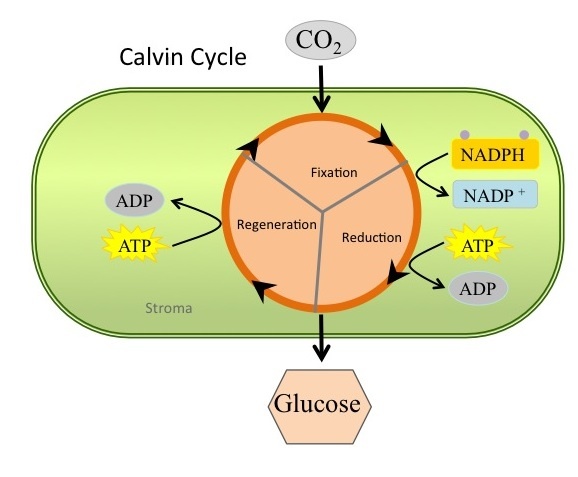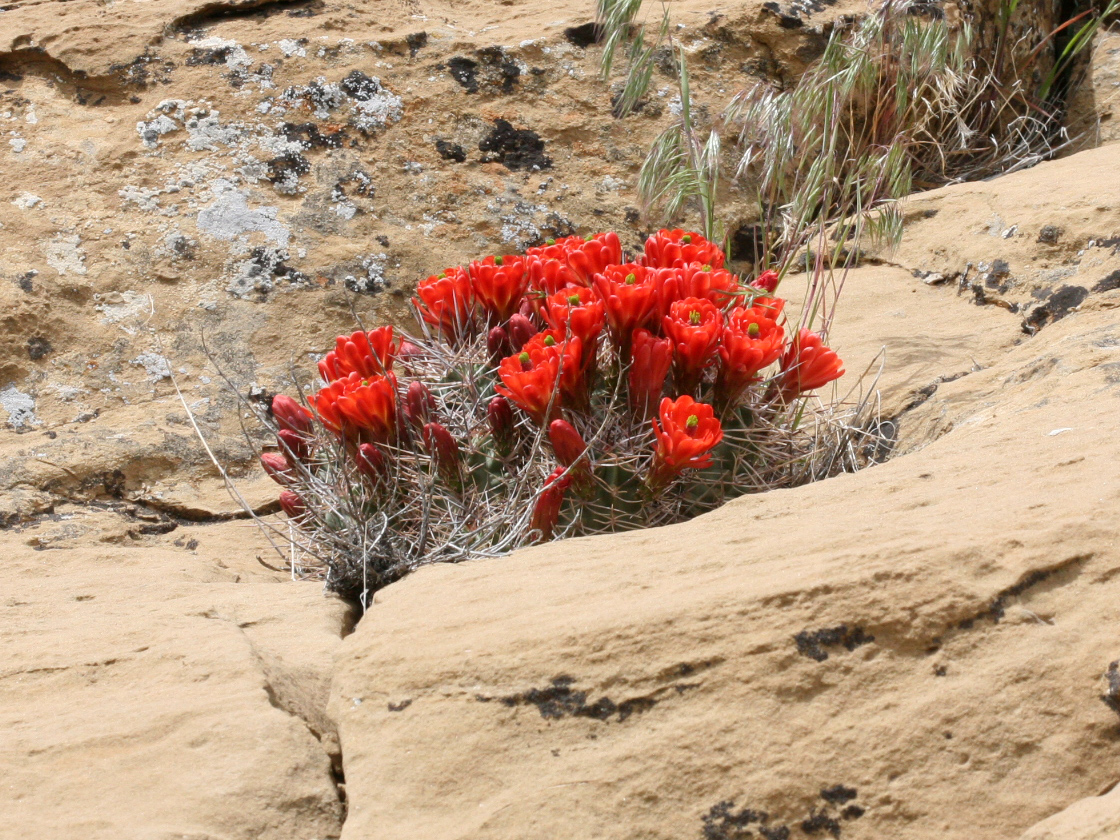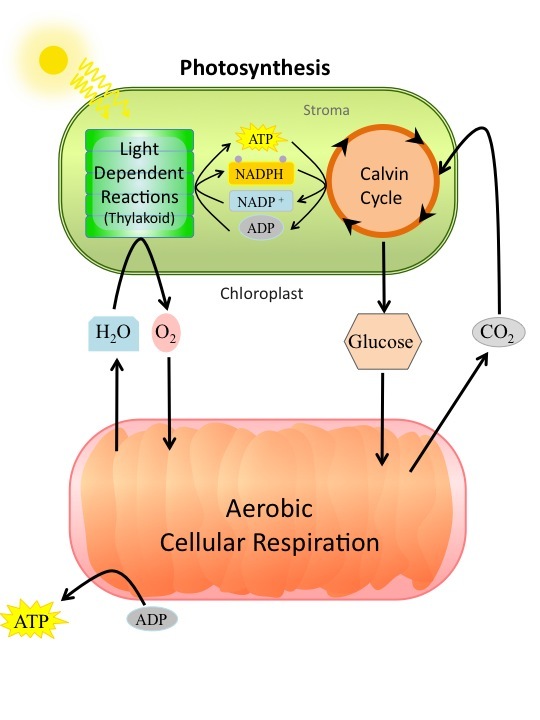| << Chapter < Page | Chapter >> Page > |
RuBisCO catalyzes a reaction between CO 2 and RuBP. For each CO 2 molecule that reacts with one RuBP, two molecules of phosphoglycerate (PGA) form. PGA has three carbons and one phosphate. Each turn of the cycle involves only one RuBP and one carbon dioxide and forms two molecules of PGA. The number of carbon atoms remains the same, as the atoms move to form new bonds during the reactions (3 atoms from 3CO 2 + 15 atoms from 3RuBP = 18 atoms in 3 atoms of PGA). This process is called carbon fixation , because CO 2 is “fixed” from an inorganic form into organic molecules.
ATP and NADPH are used to convert the six molecules of PGA into six molecules of a chemical called phosphoglyceraldehyde (PGAL). That is a reduction reaction because it involves the gain of electrons (from NADPH) by PGA. Recall that a reduction is the gain of an electron by an atom or molecule. Six molecules of both ATP and NADPH are used; making glucose is obviously an energy-intensive activity. For ATP, energy is released with the loss of the terminal phosphate atom, converting it into ADP; for NADPH, both energy and a hydrogen atom are lost, converting it into NADP + . Both of these molecules return to the nearby site of the light-dependent reactions to be reused and re-energized.
Interestingly, at this point, only one of the PGAL molecules leaves the Calvin cycle and is sent to the cytoplasm to contribute to the formation of other compounds needed by the plant. Because the PGAL exported from the chloroplast has three carbon atoms, it takes three “turns” of the Calvin cycle to fix enough net carbon to export one PGAL. But each turn makes two PGAL, thus three turns make six PGAL. One is exported while the remaining five PGAL molecules remain in the cycle and are used to regenerate RuBP, which enables the system to prepare for more CO 2 to be fixed. Three more molecules of ATP are used in these regeneration reactions.
During the Calvin cycle, energy and electrons harvested in the light-dependent reactions are used to produce carbohydrates i.e. glucose. There are three stages in the Calvin cycle. The first stage is carbon fixation, CO
2 from the atmosphere is attached to an organic molecule RuBP during this stage. The second stage is the carbon reduction, the energy and electrons in ATP and NADPH are used to produce carbohydrates (glucose). The last stage is the regeneration stage, energy from ATP is used to regenerate the first substrate of the cycle (RUBP). See (
[link] ) below for a review of the Calvin Cycle.

Photosynthesis in desert plants has evolved adaptations that conserve water. In the harsh dry heat, every drop of water must be used to survive. Because stomata must open to allow for the uptake of CO 2 , water escapes from the leaf during active photosynthesis. Desert plants have evolved processes to conserve water and deal with harsh conditions. A more efficient use of CO 2 allows plants to adapt to living with less water. Some plants such as cacti ( [link] ) can prepare materials for photosynthesis during the night by a temporary carbon fixation/storage process, because opening the stomata at this time conserves water due to cooler temperatures. In addition, cacti have evolved the ability to carry out low levels of photosynthesis without opening stomata at all, an extreme mechanism to face extremely dry periods.

Photosynthesis converts light energy to chemical energy in two stages, the light-dependent reactions and the Calvin cycle. By exploring these two sets of reactions, we learned how photons of light energy are turned into food by photosynthesis. The light-dependent reactions harvest the light energy to make ATP and to transfer electrons from H
2 O to NADP
+ forming NADPH and Oxygen gas. The energy and electrons in ATP and NADPH are used in the Calvin cycle to produce glucose from carbon dioxide. The sunlight energy entering the chloroplasts becomes stored as the chemical bonds in the organic molecules. See (
[link] ) below for a review of photosynthesis.

What is the fate of the carbohydrates produced by photosynthesis? About 50% of the carbohydrates are used by the plant for aerobic cellular respiration in their mitochondria. The other 50% of the carbohydrates are the building blocks for the biological macromolecules the make up plant cells that you learned about in module 3. As you may realize, these biological macromolecules are the food we eat, and you are what you eat. Taking this a bit further, all the activities you do from reading this text to sleeping require energy and that energy comes from the Sun.

Notification Switch
Would you like to follow the 'Principles of biology' conversation and receive update notifications?